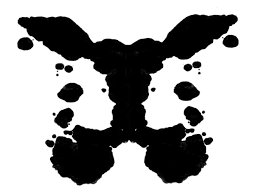Daily Archives: July 26, 2019
Methods Of Personality Assessment

Given the child study team referral of a possibly emotionally or behaviorally disturbed student, the author suggests ways to maximize the personality assessment process for use in placement and programming decisions. Results of a questionnaire survey indicate areas of difficulty that presently exist in evaluation,decision-making, and placement among sampled school psychologists. ABSTRACT: This article presents the results of two national surveys investigating how school psychologists assess the social-emotional functioning of children and adolescents. The current paper reviews the development of objective personality measurement in children and adolescents and the general results obtained in applying these measures. The second survey was sent to directors of school psychology training programs and obtained information concerning current training practices in social-emotional assessment. Once the measurements are obtained (which can appear as frequencies, ratios, or percentiles and can include derived scores and special indices), they are compared to tables of descriptive statistics organized by different factors, most importantly age. Several SCTs are reviewed relative to the practice of school psychology, and evidence is presented to support the Hart Sentence Completion Test for Children (HSCT) as aviable diagnostic tool for obtaining relevant information. One instrument, the Personality Inventory for Children (PIC), is reviewed in some depth, withclinical and research applications for the school psychologist detailed.
The use of projective/personality assessment with children and adolescents remains a controversial topic within the entire profession of psychology (not just in school psychology). The article concludes that there is no incompatibility between school psychology and projective tests, and that they cannot be categorically dismissed. There are a number of advantages to the Projective tests. Cognitive Behavioural Therapy techniques, like Abraham Low’s very simple recommendation to do the things that you fear and hate to do so long as there is no danger, are safe, tat and rorschach, effective, and not complex. Examples of stimuli used in the tests are inkblots, pictures of people, or incomplete sentences. Personality tests are usually developed with a particular theory of personality in mind. Data are presented which discuss the use, rated importance, and training emphasis of specific techniques. Some tests are easier to create and some data is easier to collect. In this lesson, our instructor Mike Wheeler gives an introduction to personality, trait theory and projective personality tests.
ABSTRACT: The present article discusses issues and procedures that make school-based personality assessment a unique process. ABSTRACT: A rejoinder to Batsche and Peterson’s article is presented which discusses the theoretical,empirical, and pragmatic merits of projective assessment when performed in the context of a comprehensive personality assessment battery. A conceptual model for personality assessment, ways to integrate both behavioral and projective assessment procedures, and issues surrounding the use of projective tests are presented. The tests are usually administered in booklet form where respondents complete the stems by writing words on paper. Supporters of the test try to keep the actual cards secret so that the answers are spontaneous. A controversy erupted recently when Wikipedia posted the ink blots online, along with the “correct” answers to each. ABSTRACT: In the 60 years since Rorschach’s monograph was published and despite much controversy and misunderstanding, the Rorschach test has flourished in clinical assessment. Another area of controversy is the test’s norms.
ABSTRACT: Recently, increased attention has focused on the need to develop effective and efficient educational service delivery systems in schools and school districts, particularly in the area of special education. This paper provides a framework for engaging in these activitiesby delineating alternative organizational change approaches available to practitioners, describing change strategies associated with these approaches, and providing guidelines for considering the alternatives in planning an organizational change program in schools. ABSTRACT:This paper examines thematic approaches to personality assessment with particular emphasis on the clinical use and limitations of the TAT. The TAT Test or Thematic Apperception Test is a projective psychological test used to explore the unconscious of an individual in order to reveal the underlying parts of personality, internal conflicts, motives and interests. Another widely used test is the Thematic Apperception Test, developed by Henry A. Murray at Harvard. These tests are designed to uncover thoughts, emotions, and desires that may not be known to the test taker.






